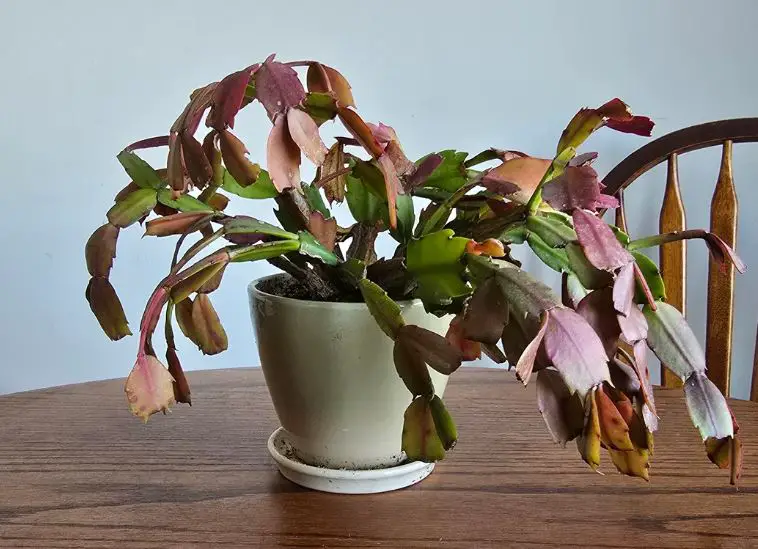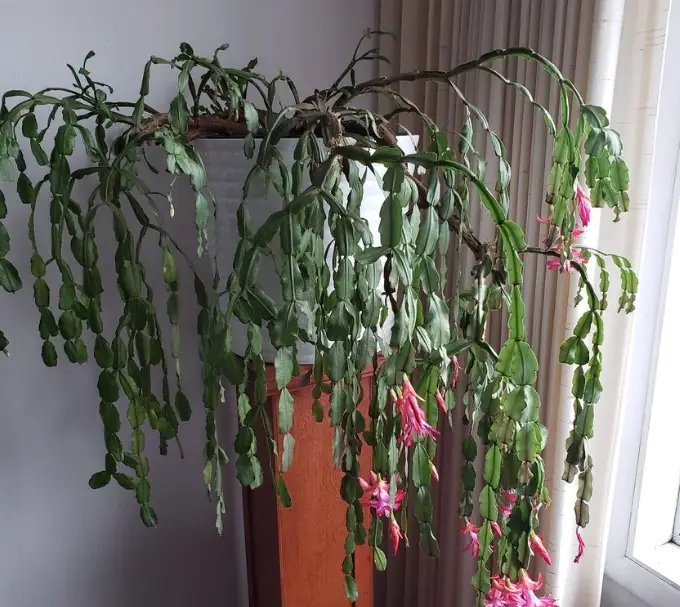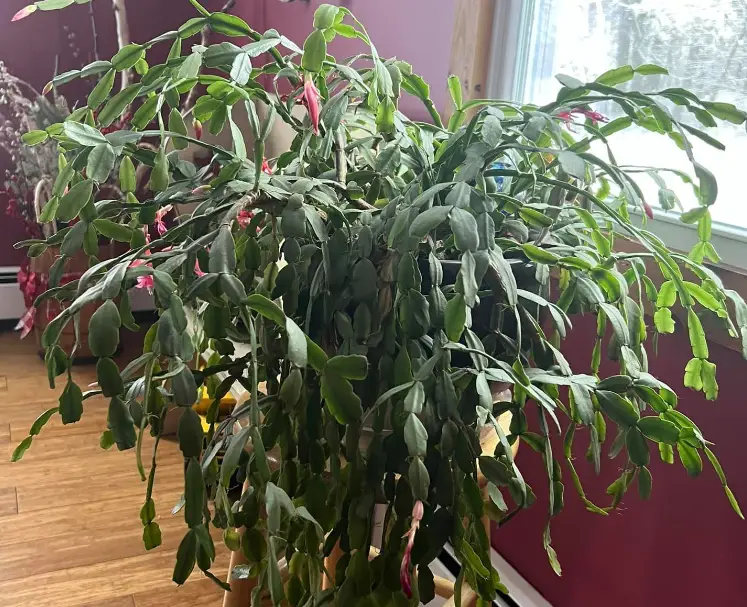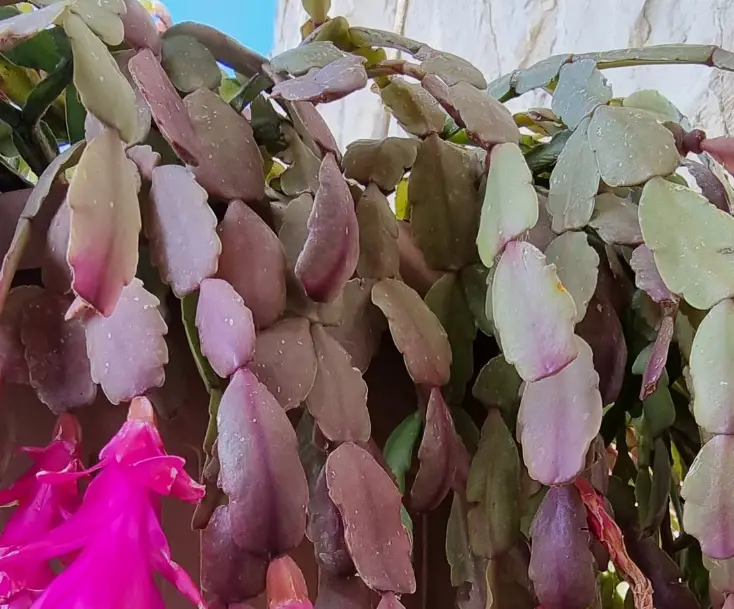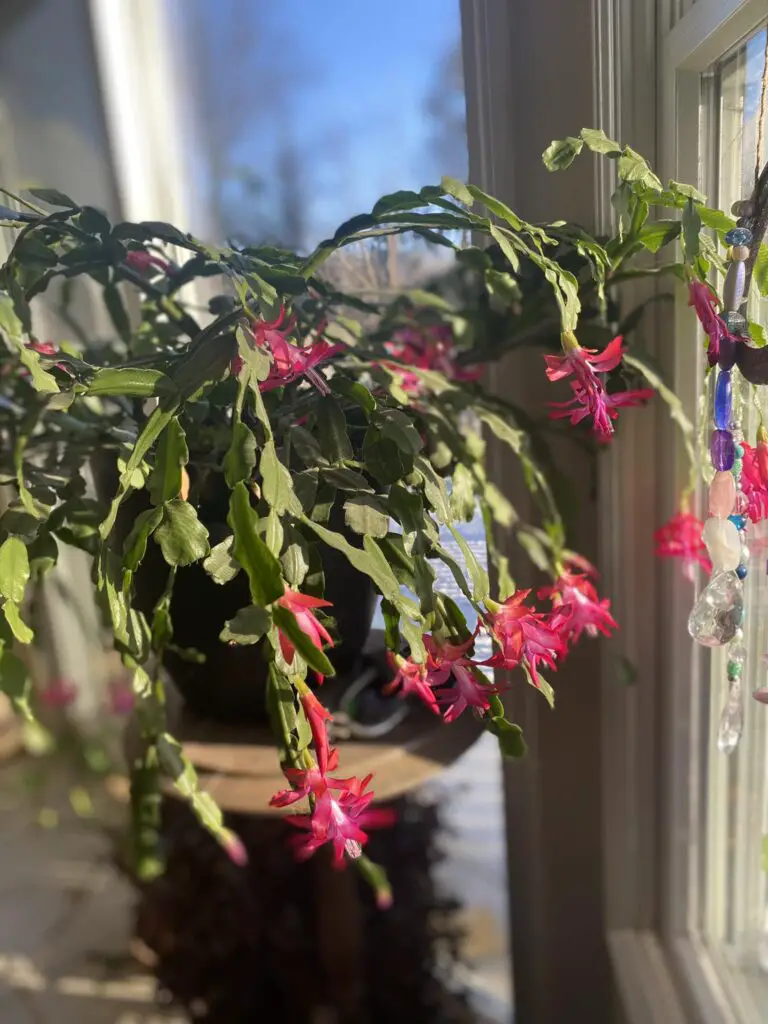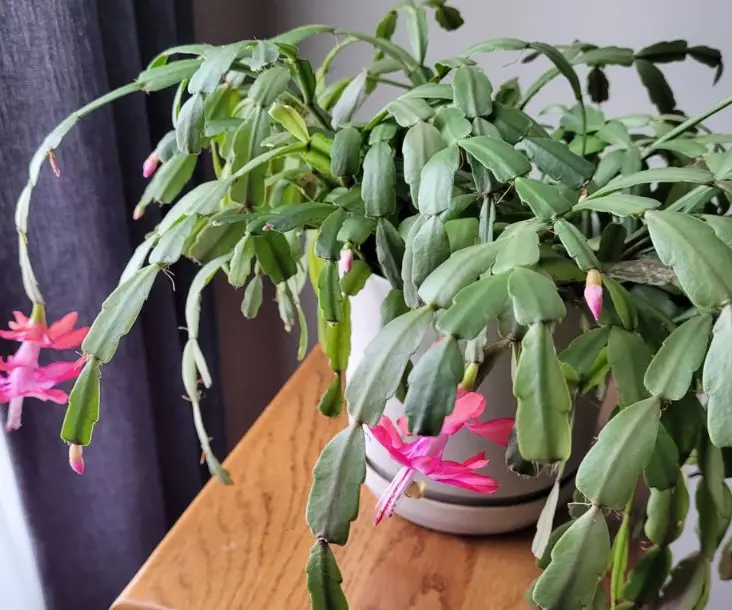Can Christmas Cactus Live Outside? What to Do
Christmas cacti are typically grown indoors due to their sensitivity to climate. The plants originate from tropical Brazilian rainforests, growing on rocks and tree branches with good protection from direct sunlight. So, can Christmas cactus live outside?
The answer is yes. Christmas cacti can live outside if you live in a subtropical or Mediterranean climate. Keep it in the shade well protected from direct sunlight, and don’t let the pot sit in water after heavy rain.
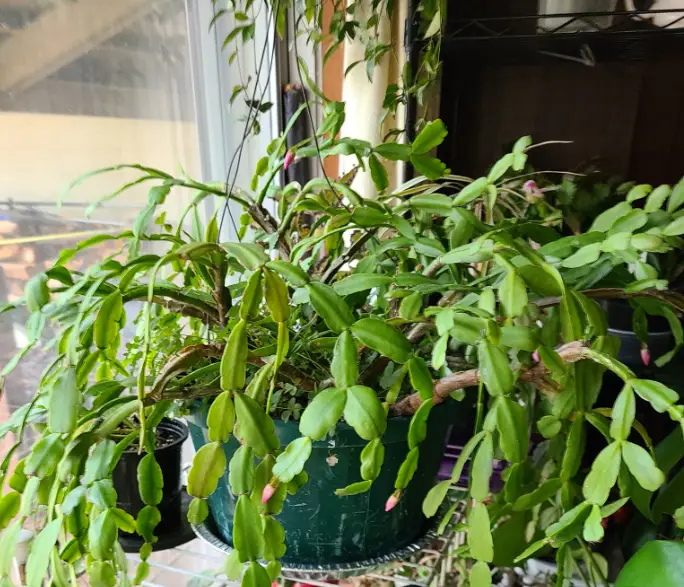
Can a Christmas cactus live outside?
Christmas cactus loves warmth, high levels of humidity, and bright indirect light. However, it is not a cold hardy plant, and it becomes easy to manage indoors.
It can be grown outdoors only in USDA plant hardiness zones 9 to 12 or in regions with tropical climates where temperatures are warm throughout the year. You can also take it outdoors during summer to enjoy the warm, humid weather.
Make sure to keep it in the shade, as direct sunlight can burn the stems and leaves. A porch or patio on the east or north side of your home can provide a perfect spot for early morning sun.
When outside, the plant might want to be watered more frequently but do not overwater or let it sit in water after a downpour. The stems and roots can rot if the soil holds too much water, explains the University of Florida IFAS.
So be sure to water only when the top inch of the soil feels dry to the touch.
When to bring Christmas cactus indoors
As fall approaches in September, bring your Christmas cactus indoors. The plant may tolerate temperatures below 50 F. (10 C.) for a short period but cannot survive freezing temperatures.
Frost or freezing temperatures can damage or kill the plant, and there is little you can do when the Christmas cactus is dying.
However, before you bring the cactus indoors, inspect for pests like mealybugs, aphids, spider mites, or gnats on the plant. This helps in protecting your other houseplants from a possible pest infestation.
Spray the cactus with a stream of water to knock off insects trying to hide on the plant. Make sure to cover the soil to avoid overwatering the plant. If the infestation is severe, use neem oil or insecticidal soap to control the pests.
Christmas cactus indoor care
Although warm temperatures are important during the growing season, cool temperatures are needed for the Christmas cactus flowering.
When October arrives, keep the plant in a cool place with temperatures between 60 to 65 degrees Fahrenheit for blooming. Additionally, place it in uninterrupted darkness for 12 to 14 hours every night for six to eight weeks to encourage blooming.
You may place it in a dark room or cover it with a carton box every night.
When buds start forming, cut back on watering and do not fertilize. Keep the plant away from heat vents, fireplaces, or other radiant heat sources. Water only when needed to keep the leaves from wilting.
It’s normal for humidity levels to drop during winter since cold air doesn’t hold as much moisture as warm air. To prevent buds from falling off the Christmas cactus plant and wilting of flowers, you need to boost the humidity levels around the plant.
Simply place the cactus planter on a pebble tray half-filled with water. Alternatively, mist the plant with room-temperature water when the air feels dry.
Additional care tips
Christmas cactus ends blooming in late February or March. After two or three weeks of rest, you’ll notice new growth on the stems when spring arrives. This is the best time you should prune the cactus for more foliage and blooms in the future.
Be sure not to trim more than 1/3 of the plant. Use sterilized shears to avoid the spread of infections.
You may propagate the Christmas cactus cuttings to get more plants you can gift your friends or family.
Simply obtain a cutting with two to three segments and let it dry overnight for the cut end to heal. Insert an inch dip into a new soil mix and water sparingly until new roots or growth form.
Christmas cactus thrives when root bound; therefore, use a small pot when planting it. To avoid root rot problems, use well-drained soil formulated for succulents and a pot with drainage holes at the bottom.
Unglazed clay pots are a great option for the growth of cactus plants. Their porous walls allow for the free flow of air and moisture around the plant roots.
During this active growth season, you should consider fertilizing the Christmas cactus. Feed with a 20-20-20 houseplant fertilizer diluted with water to half-strength once per month.
Additionally, fertilize the plant with Epsom salt solution mixed at a ratio of 1 teaspoon to 1 gallon of water, but don’t apply the same week you use fertilizer.
Final Thought
Under the right care, a Christmas cactus will reward with beautiful blooms in the dead of winter. While it’s a typical indoor plant, it can be outside during summer if you keep it away from direct sunlight, winds, and floods. Fertilize during its growth period and water only when the soil dries out.
References: Thanksgiving & Christmas Cacti, Clemson Cooperative Extension, and Schlumbergera Wikipedia
My name is Diane M Lewik, and I am the founder of this website. I am a degree holder in plant biology from the University of California – Berkeley. Over the years, I have cultivated a vast collection of succulents and I have learned a great deal about how to grow and care for these unique plants. Feel free to ask any questions in the comment section below.
